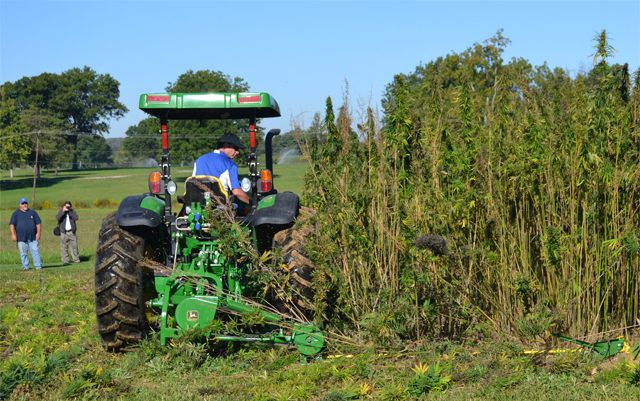If Mother Nature could talk, she would be criticizing those who mow down mustard plants, Brassica juncea and Brassica carinata. Just as the animal world has scavengers to clean up decay, plants provide the same effective process, only by removing toxins from the soil. The uptake of contaminants in certain plants occurs primarily through the root system, in which the principal mechanisms for preventing contaminant toxicity are found.
Hemp is another such remediate plant and one researcher from Phytotech, Slavik Dushenkova, remarked that “hemp is proving to be one of the best phytoremediative plants we have been able to find.”
Phytotech is part of a group of research companies that tested industrial hemp in the 1990s in an attempt to clean up the radioactive soil that surrounded Chernobyl. Sunflowers were also tested with good results. For the past decade, industrial hemp has been growing around the abandoned Chernobyl nuclear power plant in Pripyat, Ukraine, and has been helping to reduce soil toxicity.
Another study on Chinese hemp strains, conducted in 2011, found that many hemp strains have the ability to absorb and accumulate large quantities of cadmium in soil, without detriment to the plant itself. While this does throw up various implications for selection of sites for cultivating food-safe hemp, it also indicates that cadmium-contaminated sites will particularly benefit from phytoremediation schemes that make primary or exclusive use of hemp. Furthermore, even if hemp used to decontaminate soil is unsafe for consumption, it can still be used in a number of industrial applications, such as for bio-fuel.
The number of countries that are finding toxic soil continues to grow. Japan has also discovered radioactive emissions and toxic metals – including iodine, cesium-137, strontium-90, and plutonium in their soil, plants and animals. There has also been toxic soil found in parts of North America as well. However, the ban on growing industrial hemp has left Japan and the U.S. to find alternative, and less productive, phytoremediative plants.
Mother Nature has provided the product and the Russians have provided the testing to prove that hemp is an effective soil decontamination source for many toxic metals. Restoring areas of toxic contamination is very costly, as well as being able to locate a suitable disposal site. Environmental cleanup can be as simple as using natural resources, such as Indian mustard seed, sunflowers and hemp. It is time to address environmental concerns and to allow hemp to care for the earth, as Mother Nature intended.
SOURCES:
http://www.mhhe.com/biosci/pae/botany/botany_map/articles/article_10.html
http://www.unep.or.jp/Ietc/Publications/Freshwater/FMS2/1.asp
https://sensiseeds.com/en/blog/hemp-decontamination-radioactive-soil/







Q: What do you do with the plants after they have absorbed all the toxins from the soil? Different parts of the Hemp plant absorb various levels of toxins that could affect future contact with animals, mankind, environment, etc. That was the question that stumped our team until we figured out how to utilize nature once again to turn the toxins “inert”.
The soil toxins remain in the roots of the plants. The plants are then removed and disposed of properly. Planting and monitoring in specific areas is necessary to avoid contamination to humans and animals. Although not a cure-all for toxins that humans have created, the cost to treat in the natural manner far outweighs the removal of once prime soil.